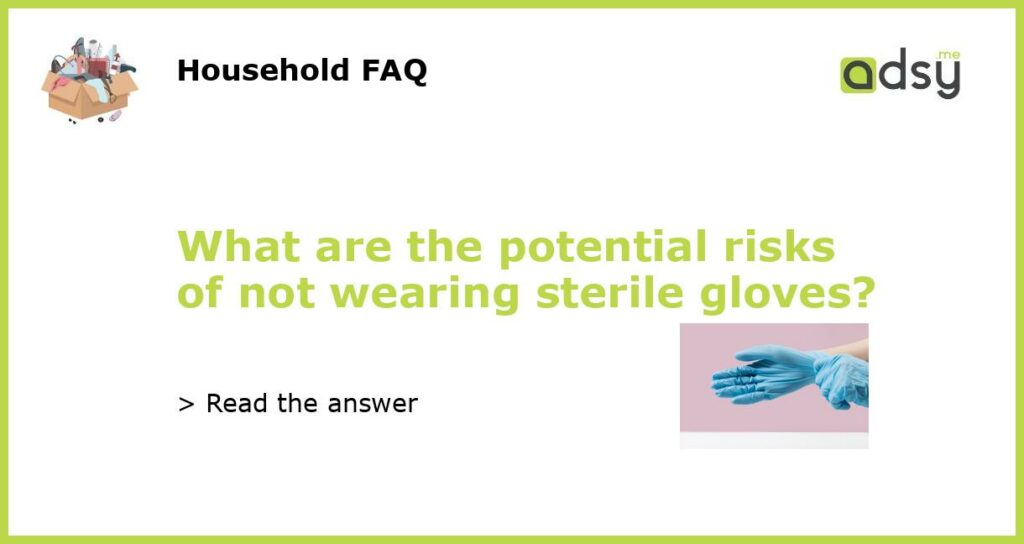Potential Risks of Not Wearing Sterile Gloves
When it comes to preventing the spread of infections and diseases, wearing sterile gloves is of utmost importance. Sterile gloves create a barrier between the healthcare professional and the patient, reducing the risk of transferring harmful microorganisms. However, not wearing sterile gloves can lead to several potential risks, including the following:
Increased Risk of Infections
One of the primary risks of not wearing sterile gloves is an increased risk of infections. Sterile gloves act as a physical barrier, preventing the transfer of bacteria, viruses, and other microorganisms. Without this barrier, healthcare professionals can unknowingly transmit harmful pathogens from one patient to another or even pick up infections from contaminated surfaces. This can lead to the rapid spread of infections within healthcare settings, putting patients and healthcare workers at risk.
Cross-Contamination
Another significant risk of not wearing sterile gloves is the potential for cross-contamination. Cross-contamination occurs when microorganisms are unintentionally transferred from one source to another. Without the protection of sterile gloves, healthcare professionals can transfer pathogens from surfaces, equipment, or other patients to the next patient they come in contact with. This can result in the spread of infections and diseases throughout the healthcare facility, compromising patient safety.
Compromised Wound Healing
Sterile gloves play a crucial role in maintaining a sterile environment during surgical procedures or when dealing with wounds. By not wearing sterile gloves, healthcare professionals introduce the risk of introducing pathogens to a wound or surgical site, compromising the healing process. Contaminated gloves can introduce bacteria, which can result in surgical site infections, delayed healing, increased scarring, and other complications. Proper glove usage is crucial to minimize the risk of post-operative infections and ensure optimal wound healing.
Occupational Hazards for Healthcare Professionals
The risk of not wearing sterile gloves extends beyond the patients to healthcare professionals themselves. Healthcare workers who do not wear sterile gloves are at a higher risk of exposure to infectious materials and subsequent infections. This can have both short-term and long-term effects on their health. Acquiring an infection can lead to illness, increased sick leave, and a compromised ability to provide quality care to patients. Moreover, repeated exposure to pathogens can lead to long-term health issues for healthcare professionals, including chronic infections and other occupational hazards.
Legal and Ethical Implications
Lastly, not wearing sterile gloves can have legal and ethical implications for healthcare professionals and healthcare facilities. In many healthcare settings, there are strict guidelines and regulations regarding the use of sterile gloves to protect patient safety. Failure to comply with these guidelines can result in legal repercussions, including malpractice claims. Additionally, not utilizing sterile gloves can be considered a violation of professional ethics and may lead to disciplinary action or damage to the healthcare professional’s reputation.






